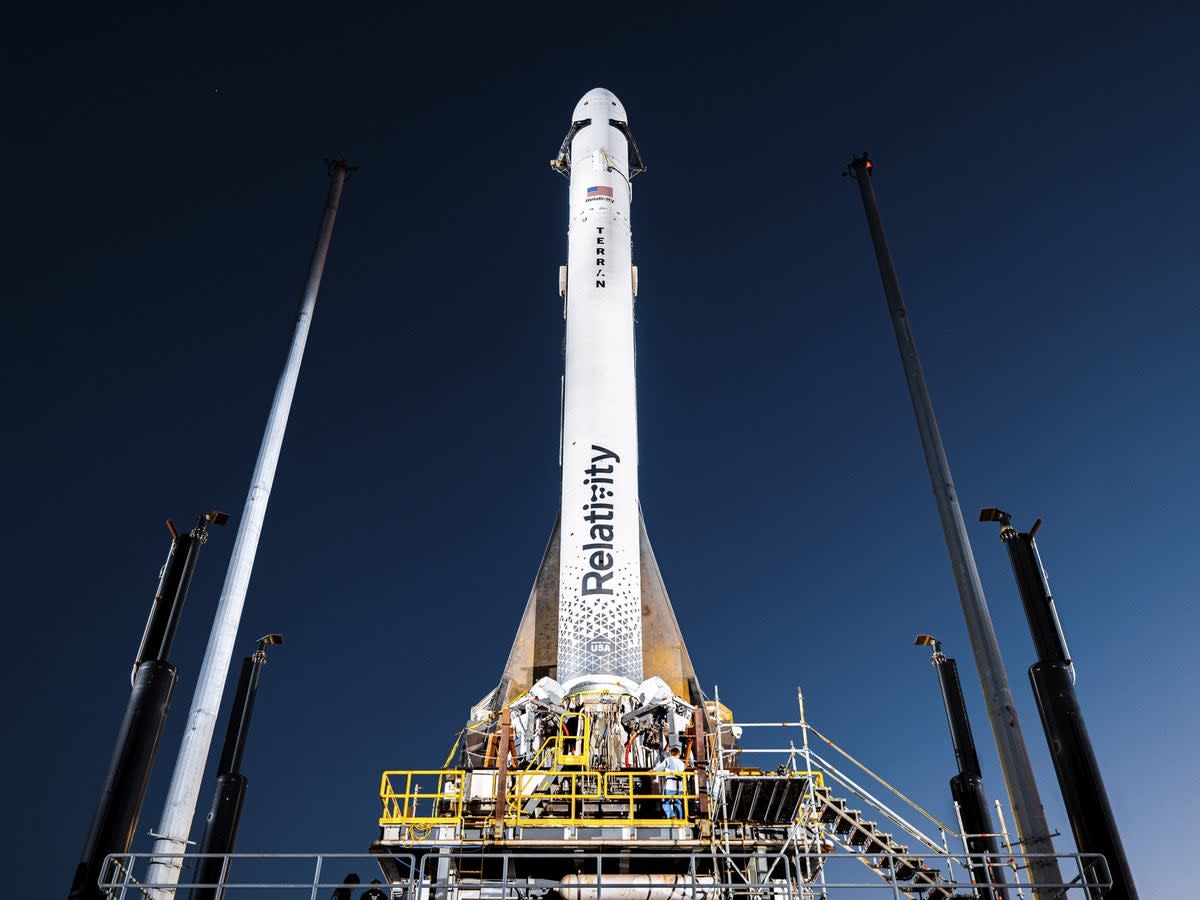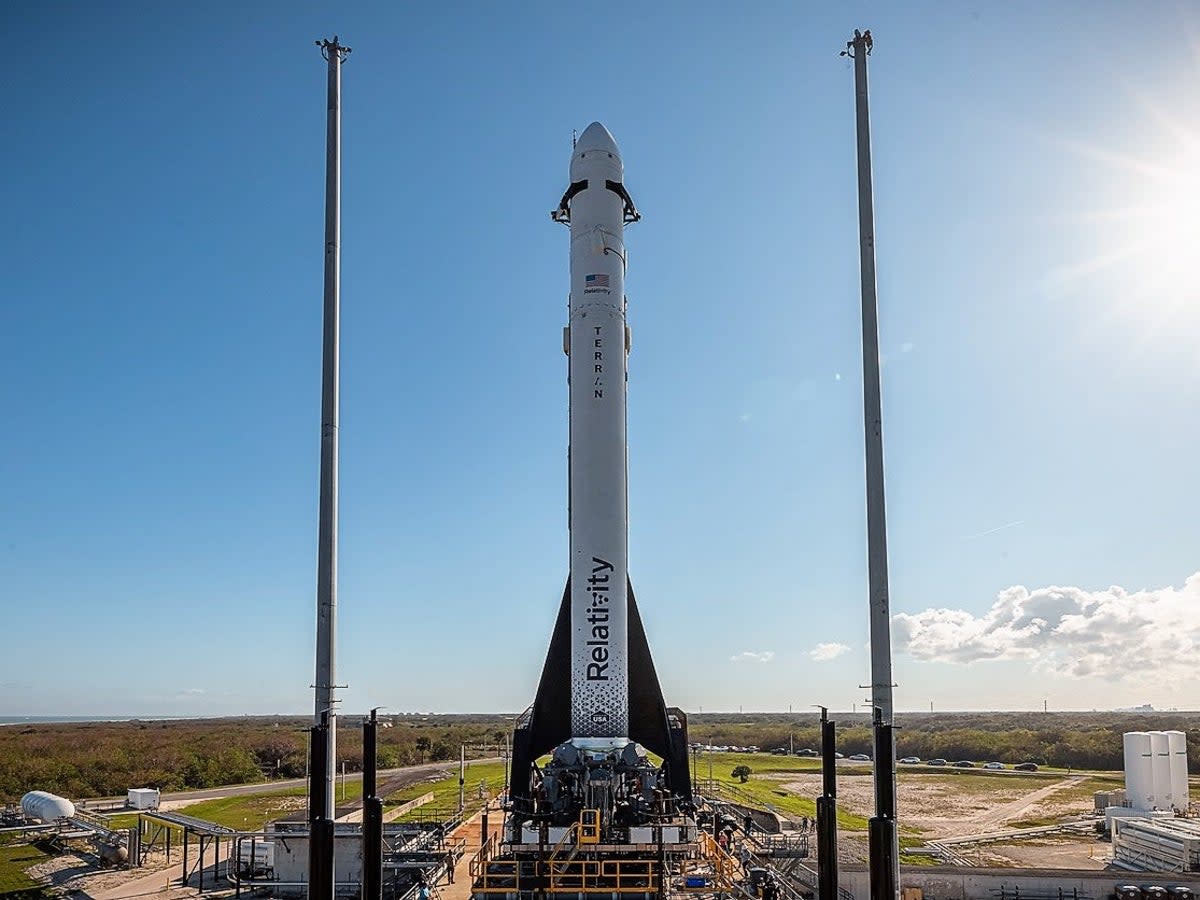World’s first 3D-printed rocket set to launch

The first ever 3D-printed, methane-fueled rocket will attempt to launch into orbit from Cape Canaveral in Florida on Wednesday.
The 33.5 metre (110 foot) Terran 1 rocket, built by California-based startup Relativity Space, uses 3D printed engines and a 3D printed structure to lift up to 1,250 kilograms into low-Earth orbit.
The test flight aims to lift off at 1pm local time (6pm GMT), making it “the largest 3D-printed object to attempt orbital flight”.
Terran 1, nicknamed GLHF (Good Luck, Have Fun), will not carry a commercial payload for the first launch attempt, though Relativity Space has already signed deals to deliver satellites into orbit.
In 2022, the company made a multi-launch agreement worth $1.2 billion with UK-based satellite firm OneWeb. The deal will see Relativity Space use its 3D-printed rockets to launch OneWeb’s low Earth orbit (LEO) satellites to boost capacity for its space internet constellation.
Relativity Space claims its novel approach of 3D printing components will significantly reduce the costs of launching rockets, charging roughly $12 million for each flight.
By comparison, SpaceX’s Falcon 9 rocket costs an estimated $67 million per launch, though it is able to carry a much larger payload of more than 22,000kg.

For its first ever test launch of the Terran 1, Relativity Space decided to skip the final static fire test, which is usually a crucial stage of pre-flight testing.
“By not completing static fire, we accept the increased likelihood of an abort on our first launch attempt,” a representative of Relativity Space said.
“But if all systems are performing nominally, we would rather release and launch during our next operation than continue to wear the vehicle through additional testing on the ground.”
If successful, it will also be the first ever privately-funded rocket to reach orbit on the first attempt.
Wednesday’s launch attempt will be live streamed on Relativity Space’s YouTube channel.
“This launch won’t singularly define our long-term success,” said Relativity Space CEO Tim Ellis.
“This launch will, however, provide us with useful data and insights that will make us better prepared for our next at-bat, and is a fantastic learning platform for developing technologies directly applicable to Terran R, giving us a lot of confidence we are ahead in the race to become the next great launch company.”


